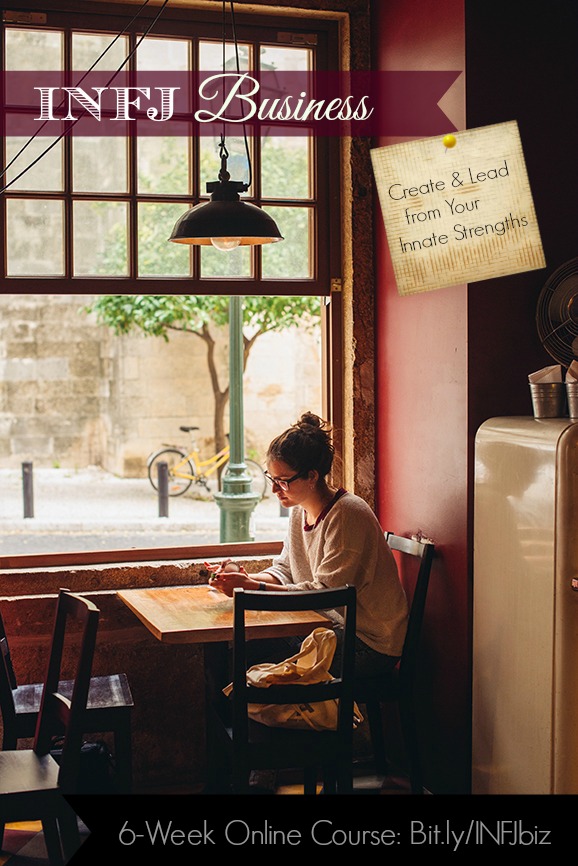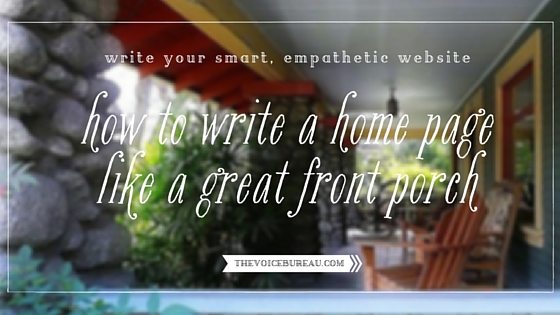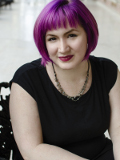At The Voice Bureau, we’re planners. We leave lots of space for intuitive lunges, but we also love a good spreadsheet.
So naturally, as the end of the year draws close, Tami Smith and I have been having lots of big talks: about what really worked this year for Voice Bureau readers and clients, as opposed to what just felt good, or what may have looked promising but didn’t pan out so well in implementation. And most importantly, we’ve been deciding on what we will commit to for our 2014 collaboration.
Then Tami came up with The Curiosity Grid, a simple, self-guided inquiry tool that brings clarity to what was created, launched, and accomplished in a given period of time — and actually understand what to do with the reflective process. (BONUS: The Curiosity Grid works on personal stuff, too, not just business-related.)
We’re sharing Closure & Clarity, featuring The Curiosity Grid, via a simple, elegant 4-week course, for which registration is open now and closes end of day Thursday, December 19th.
Here’s a Q&A with Tami herself, the creator and facilitator of the course. (I’ll be a supporting contributor.)
ABBY: Tami, first, let’s talk a bit about you. Many of our Voice Bureau clients know you as the co-creator of Empathy Marketing, our high level consulting package for business owners. They also know you as the co-creator of DIY workshops under the Voice Bureau.
Can you share with us a few highlights from your independent work, and your life, that Voice Bureau readers would connect with? How can you relate to the mostly solopreneur crowd that is our readership?
 TAMI: I’ve noticed a high level of self-awareness and sensitivity among the readers of the Voice Bureau. I love the way they approach all thing,s and especially marketing. I knew when I started my consulting businesses that the way I worked and how I connected with people was going to have to be from a place of genuineness. I was always allergic to hype and any bending of truth in marketing. I started my consulting business in 2008 with the desire to bring all the experience I had from working in a variety of high level sales and marketing positions to the small business owner.
TAMI: I’ve noticed a high level of self-awareness and sensitivity among the readers of the Voice Bureau. I love the way they approach all thing,s and especially marketing. I knew when I started my consulting businesses that the way I worked and how I connected with people was going to have to be from a place of genuineness. I was always allergic to hype and any bending of truth in marketing. I started my consulting business in 2008 with the desire to bring all the experience I had from working in a variety of high level sales and marketing positions to the small business owner.
I remember when I wrote an email to friends and family announcing the launch of my business. I was so excited about what was ahead, and how my knowledge was going to be so appreciated by small businesses owners. Yes. That was how naïve I was. Some well-intentioned responses to that email came back informing me about the road ahead and how hard it is to own a business. It was the “good luck with that — tell me when you are back in the market looking for a job” kind of response, and I thought, well, just because it is hard for some people doesn’t mean it will be for me. I thought things would be better for me because I already understood marketing and sales. You could say the early optimism and confidence was slowly wrung out of me over the next five years, replaced by the reality that building a business and a brand you love is going to have ups and downs, cycles, seasons, and all achievements are short lived. There’s always more to do and finding your own rhythm takes time.
It seems that many Voice Bureau readers are also great writers, so I’m not sure how much they can relate to this aspect, but it feels like so much work just to get someone to notice my brand. I have two pretty big things working against me. One, I don’t like attention. For real. It isn’t that I’m shy, in fact, I’m fairly outgoing and genuinely like people and meeting new people. It is when some sort of spotlight shines on me that I shrink. I love engaging in good conversations that are private, not public. Two, I’m not a good writer. Words seem to get stuck in between the thought and the expression on the page. I have all these things to say and the words just swirl around and come out sounding mixed up. Obviously, in the online marketing world, that is a pretty big hurdle.
On the upside, I have a really good grasp of the big picture and can quickly understand how to connect various dots to create strategy. It is an innate talent and one that I’ve cultivated and honed to use in my consulting practice. I have that problem-solving gene that drives me to innovate. You can read more about my personal story and experience here.
ABBY: What’s at the heart of Closure & Clarity, the 4-week course, and why is now the right time to share this approach?
TAMI: The heart of Closure & Clarity is an honest and mature conversation with one’s self. It is surprisingly difficult just to come really clean, to be totally open and honest. There’s often a part of ourselves (at least this is my experience) that wants to hang on to some sort of story about our experience. Sometimes the story is about how we deserve better, how things should be different, how we should be different than we are, how we’re not enough, or how life is unfair. For some reason, the stories about the spectacular results our clients got, the kindness we showed, the ways we showed up fully, never seem to stick. We end up with a skewed perspective of reality. Closure & Clarity is a way to see the whole of your experience, not just the sticky stuff. It is a way to see that limits aren’t obstacles as much as realities that need to be seen, accepted, and released. It is a way to learn from your past year and to see more clearly that there really are no mistakes.
Why is this the right time? Well, anytime is the right time to pause and use the Curiosity Grid to see your own truth, but it is especially important this time of year. Collectively and culturally, we are acknowledging endings and celebrating beginnings. There’s a natural drive to give pause and to plan.
ABBY: Why don’t traditional business planning methods, and resolution-making and goal-setting, work so well for self-employed people building a values-driven business?
TAMI: I don’t think anyone starts a business so they can be the worst boss they’ve ever had or experience a little more of the daily grind. Goals hanging over your head can quickly become that demanding boss. I’m not saying we shouldn’t set goals at all, rather, we need to learn how to use our energy in a way that is more productive. My sense is the biggest motivation for starting a business is to have more freedom. We want freedom to act and move from our values. Goals have ends. The teaching around goal setting is that they should be Specific, Measurable, Attainable, Realistic, and Timely. If we hold freedom, connection, peace, and creativity as our highest aspirations, we see that these things are not destinations we arrive at by reaching a set of goals.
ABBY: It’s so easy, as microbusiness owners and brand creators, to get caught in cycles of comparison, jealousy, and self-loathing, which ultimately only distracts us from doing the great work we want to do. What’s your take on the Not-Enoughness complex so familiar to many solo business owners (especially sensitive ones)?
TAMI: Yep. Uh-huh. I agree. It seems to be inescapable, in my experience. I’m curious about this, though, because while I see Not-Enoughness as a universal human experience, it seems to be accentuated by being a business owner and even more so if you are an online business. If we can accept that there’s a part of us that will never feel whole, that it is wired-in to our experience, we can start to see it for what it is and accept it.
For me, I experience this self-loathing, I-just-don’t-matter feelings when I bump up against my limits. I literally come to the end of myself and admit that I just can’t understand or I just can’t do whatever it is I’m trying to do. In that stopping, and admitting, I start to let go. It is a surrender and sometimes it hurts a lot. When I fully stop, then the comparing and stories about how I’m not good enough stop, too. In the space, in the void that is created by stopping, something new starts to arise and I feel connected to truth. Then I start to see possibilities and I’m able to work from a place of curiosity and wonder again, instead of comparing myself. That is my process and something that has taken years of practice.
I want to say a little more about why this Not-Enoughness complex is especially difficult and accentuated in solo-entrepreneurs. There’s a general consensus that bringing a business online is something anyone can do if you know a few secrets. Once you get past the initial hurdle of the first few years, you’ll be ready to reap the rewards of the greatest lifestyle on the planet. There’s an unrealistic view around this “have it all” message that sells programs. We end up comparing ourselves to people that have achieved some sort of satisfaction, popularity, or monetary success and believe that we should be the same, or we should be experiencing the same thing. That is just craziness. The deeper truth is we all have our own unique experience and have access to everything we need to enjoy our lives, if we can see the beauty in our own experience (as it is, not as we wish it was).
ABBY: What do you see as the point of getting closure on 2013 and clarity on 2014? What difference will going through a process like this make to our businesses, brands, and to us, as individuals?
TAMI: The point of getting closure on 20213 and clarity on 2014 is that we don’t rush right past our own life in a hurry to get to a better one. There is so much wisdom waiting for us to extract from our experiences and if we don’t take the time to see it, if we don’t get the lesson the experience held for us, we are bound to repeat it. Our work can have impact, meaning, and profitability, producing a more satisfying business life when we are able to act and make decisions from a place of gentleness and wisdom, knowing we are turning obstacles into stepping stones.
ABBY: The tool you’ll be teaching in Closure & Clarity is The Curiosity Grid. Tell us about the idea behind the tool and how it came into being.
TAMI: Curiosity is an amazing gift and a tool we can use to gain clarity. We can use the power of curiosity to understand ourselves and our experience, to see what is really true without judgement. I wanted to create a way to use curiosity without getting lost down rabbit holes. The Curiosity Grid is designed to provide a container, or structure, to tap the power of curiosity and access the answers you need for closure and clarity.
Think of it this way: the idea is to have a structured way to use curiosity as a guide.
ABBY: Anything else you’d like to tell us, Tami?
The 4-week course walks you step-by-step gently through the process of sorting through the past year’s ups and downs and honoring all your efforts. The Curiosity Grid provides structure to question what needs to be questioned, to see the beauty in all your work, even the things that didn’t work out so well, and to reveal your heart’s deepest desires. This course is designed to give you peace in letting go, which is always just a new beginning.
In the comments, we’d love to hear:
What’s your process for getting closure and clarity during a transition season in your business or brand?
{ 7 comments }





 Hello, you.
Hello, you.